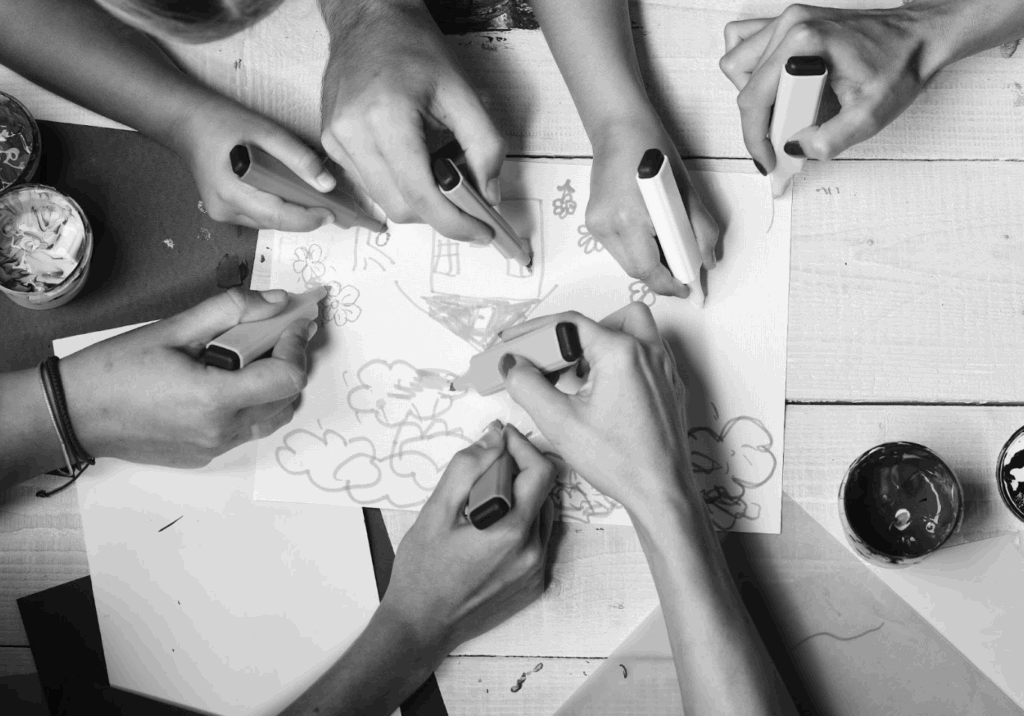Feedback is the lifeblood of great design. Whether you’re designing a logo, a website, or a full brand identity, one thing remains true: your first draft is rarely your best. As designers, we rely on feedback not only to refine our work but also to ensure it aligns with the client’s goals and resonates with the intended audience.
In this post, we’ll explore why feedback is so essential in the design process, how to receive and deliver it effectively, and how to create a feedback-friendly workflow that leads to stronger, more strategic designs.
Why Feedback Matters in Design

Design is more than aesthetics. It’s communication, problem-solving, and user experience. Without feedback, we operate in a vacuum, guided only by personal taste and assumptions. Here’s why feedback is invaluable:
1. Improves the Final Product
No matter how talented you are, feedback almost always leads to a stronger outcome. A second set of eyes (or third or fourth) can catch inconsistencies, unclear messaging, or usability issues you might have overlooked. Constructive input helps push your work from “good enough” to exceptional.
2. Aligns Design with Business Goals
Design should serve a purpose—whether it’s driving sales, increasing engagement, or telling a brand story. Feedback from stakeholders ensures the design aligns with business objectives and speaks to the right audience.
3. Strengthens Designer-Client Collaboration
Feedback is a two-way street. It opens up dialogue between designers and clients, creating a sense of collaboration. When clients feel heard and involved, they’re more likely to be satisfied with the final result.
4. Supports Growth and Learning
For both junior and senior designers, feedback is a tool for professional development. It helps you see your blind spots, learn from your mistakes, and discover new ways to solve problems. Over time, it sharpens your instincts and improves your ability to defend your design decisions with logic and clarity.
Types of Feedback in the Design Process

Not all feedback is created equal. Understanding where it comes from—and what kind of value it adds—can help you process and apply it more effectively.
1. Client Feedback
Clients provide insight into how well the design reflects their vision, values, and goals. This type of feedback is essential for brand alignment and business strategy.
2. Peer Feedback
Your fellow designers (or even copywriters, developers, and marketers) offer valuable design-specific critique—like layout, typography, balance, color, and hierarchy. They can also challenge your creative thinking and suggest new directions.
3. User Feedback
If you’re designing a product or interface, user feedback is gold. Usability testing, surveys, and beta testing reveal how real users interact with your design—and highlight pain points or areas of confusion.
Best Practices for Giving and Receiving Feedback

Whether you’re the one giving or receiving feedback, there are some key principles that lead to productive conversations and better outcomes.
For Designers Receiving Feedback:
- Don’t Take It Personally
Remember, feedback is about the work, not you. Every critique is an opportunity to improve. - Seek Clarity
If a comment is vague (e.g., “Can you make it pop more?”), ask follow-up questions. “What do you mean by pop?” or “Are you referring to the colors, the layout, or something else?” - Listen Before Defending
Avoid immediately justifying your choices. Instead, take a moment to listen, absorb, and reflect. You can always explain your decisions after fully understanding the concern. - Document and Prioritize
Write down the feedback, group similar comments, and determine which ones are most critical to address first.
For Clients or Stakeholders Giving Feedback:
- Be Specific
Instead of saying “I don’t like it,” explain why. Is it too formal? Too colorful? Too busy? - Focus on Goals
Frame your feedback around objectives. For example, “This doesn’t feel premium enough for our luxury audience,” is more helpful than “I don’t like the font.” - Avoid Micromanaging
Trust the designer’s expertise. Instead of dictating pixel-level changes, describe the problem and let the designer solve it creatively.
Building a Feedback-Friendly Workflow

Great feedback doesn’t happen by accident—it’s built into your process. Here’s how to make it an intentional part of your workflow:
1. Set Expectations Early
At the start of a project, explain to clients when you’ll ask for feedback, how they should provide it (written, verbal, in a document, etc.), and who should be involved.
2. Use Feedback Rounds
Structure your process with dedicated feedback rounds. For example:
- Round 1: Big-picture feedback (concept, direction, mood)
- Round 2: Refinement feedback (layout, visuals, copy)
- Round 3: Final tweaks (small adjustments, typos)
3. Create Feedback Guides
Provide your clients with a short checklist or guide on how to give useful feedback. This not only educates them but also saves time and confusion later.
4. Use Tools That Enable Collaboration
Platforms like Figma, Adobe XD, InVision, and Frame.io allow clients and collaborators to leave comments directly on the design, making feedback easier to manage and reference.
Overcoming Common Feedback Challenges

“Too Many Cooks in the Kitchen”
Too many voices can lead to conflicting feedback. Request that the client designate a single point of contact or consolidate feedback before sending it to you.
Vague or Unhelpful Comments
Encourage specificity. Provide examples, visuals, or comparisons to help them articulate what they want or don’t like.
Resistance to Change
Sometimes, you’ll need to educate the client on design best practices. Be respectful but assertive in explaining why certain choices are effective, and offer alternative solutions instead of just saying no.
Feedback isn’t a nuisance—it’s a necessity. When done well, it leads to better designs, stronger relationships, and more effective communication. It transforms a design from “just okay” to something truly impactful.
As a designer, your ability to welcome, manage, and implement feedback will set you apart—not just for your technical skill, but for your professionalism and collaborative spirit.
So embrace feedback. Ask for it. Learn from it. And watch your designs (and career) grow because of it.
- How to Create Accessible and Inclusive Designs - October 6, 2025
- Designing for Different Cultures: Challenges, Tips, and the Role of AI - September 3, 2025
- The Importance of Feedback in the Design Process - August 6, 2025


0 Comments